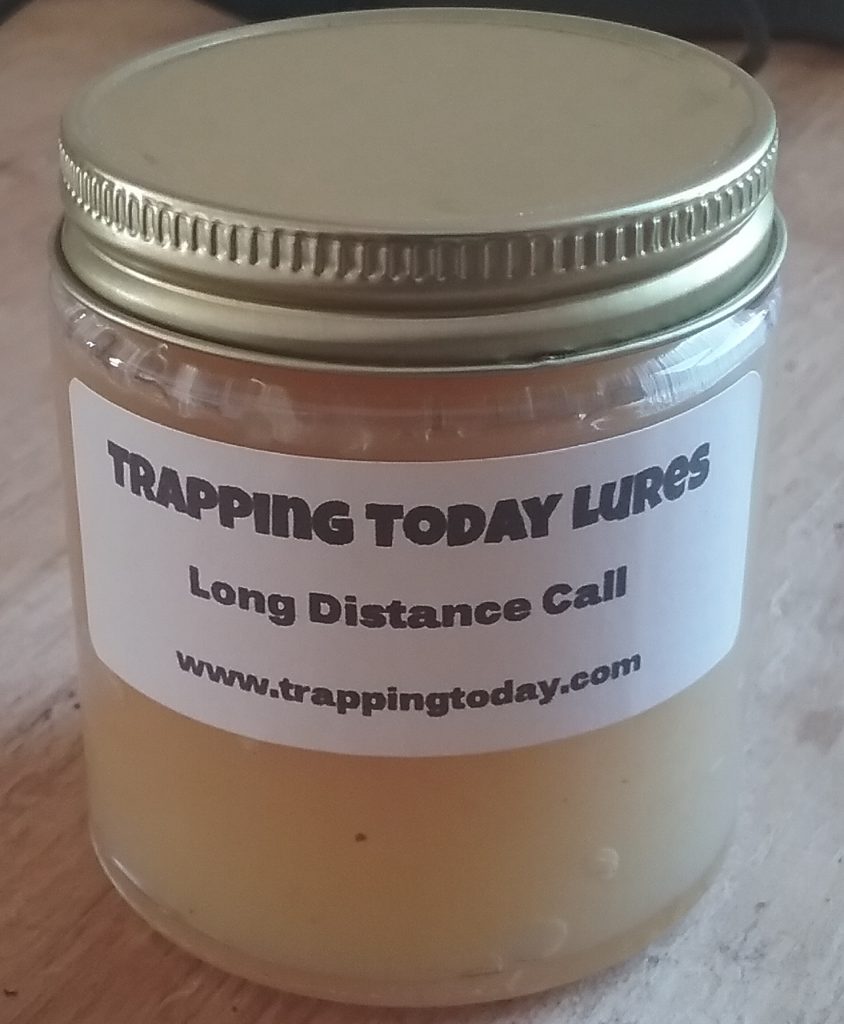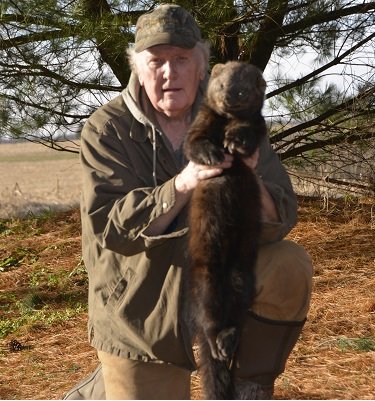 In today’s information age, I believe there is a need to produce trapping lure with a transparent set of ingredients to help trappers understand what works and doesn’t work on their own lines. Based on some problems I’ve experienced on my own traplines, I felt the need to make a lure that would work better for me. I’m not a master lure tester and formulator, and would never claim my lure could outperform lures produced by some of the greats (i.e. Craig O’Gorman, Clint Locklear, and others), but I do believe they fill a need among some trappers who think like me. I believe any trapper can learn how to formulate their own lures, and we should constantly be trying new things. I’ve put together a long distance call lure to fill a need in my marten and fisher trapline in northern Maine, and shared all of the ingredients to help trappers decide whether such a lure might work for them.
In today’s information age, I believe there is a need to produce trapping lure with a transparent set of ingredients to help trappers understand what works and doesn’t work on their own lines. Based on some problems I’ve experienced on my own traplines, I felt the need to make a lure that would work better for me. I’m not a master lure tester and formulator, and would never claim my lure could outperform lures produced by some of the greats (i.e. Craig O’Gorman, Clint Locklear, and others), but I do believe they fill a need among some trappers who think like me. I believe any trapper can learn how to formulate their own lures, and we should constantly be trying new things. I’ve put together a long distance call lure to fill a need in my marten and fisher trapline in northern Maine, and shared all of the ingredients to help trappers decide whether such a lure might work for them.
An effective lure can sometimes mean the difference between success and failure on the trapline, but finding such a lure can be a challenge. There is no shortage of trapping lures available on the market today. In fact, trappers have so many lure choices it can often get quite confusing. Since no lure maker will share the ingredients or formulation of their lures, trappers usually have to rely on the reputation of the lure maker and test the lures on their own traplines to determine whether they work.
I’ll be clear and state that I believe trappers tend to overemphasize the importance of lure to their success, which leads to a reliance on, and false sense of need for a certain lure. That’s not to say choice of lure isn’t important. Some really great trappers and expert lure formulators have tested lures for years and come up with some really spectacular products that can outperform others. They have secrets, and keep them tight to their vests for good reason. But overall, I tend to believe these are the exceptions, and that generally there aren’t a great deal of secrets in the lure making industry.
Since it’s easy to throw a few ingredients in a bottle, label it and sell under a trade name, it can become a challenge for trappers to make sense of it all. The lure business becomes as much about marketing as it is about the ingredients used and their importance in attracting an animal. To help promote some transparency in the industry (and because I just plain thought it would be a neat thing to do) I decided to share the ingredients used in my All Season Long Distance Call Lure.
All Season LDC Lure
Weather: Land trapping in northern Maine in November and December can present a great deal of challenges. This is a wet environment subject to extreme fluctuations in temperature and weather conditions. We often get large amounts of rainfall in early November followed by a cold front that freezes everything solid.
Land Patterns: Trapping in heavily managed timberland forests can make it difficult to pinpoint animal location. There’s a road every half mile, and skidder trails from past timber harvests across the entire landscape. Each one of these trails can be travelways for predators, and the wet environment can wash away sign quickly. So if you can’t nail down where a furbearer is traveling but know its general home range, a long distance call can be a huge asset. Drawing in an animal from a long distance can greatly increase a trapper’s chance for success.
Conventional Lures: I’ve tried a number of different lures on the trapline in the past. My greatest challenge has been trying to find something that would hold up to heavy rain followed by freezing temperatures. The consistency of most lures caused them to melt away only days after application, making my sets useless at attracting predators from a long distance. The lures I found that held up the best to these weather conditions were formulations with a heavy grease or petroleum base that shed water. Lanolin based lures would be ideal, except that lanolin freezes as hard as a rock when it gets cold.
My Ideal Lure: At the simplest level, vaseline with skunk essence mixed in will do the trick as a weather-resistant all season LDC lure. But I wanted to avoid the tendency of petroleum jelly to crust over and lock in scent, add more than just skunk for appeal. Something that would appeal to a predator’s food needs as well as a few other general attractants would be ideal.
All Season LDC Lure ingredients:
Grease base – sheds water, keeps the lure from freezing
Pure quill skunk essence – cold weather calling power
Beaver castor – one of the best all around attractants
Anise oil – another all around attractant
Musks – (tonquin, muscaro, civet and ambrette) – these serve as fixatives and great overall predator attractants
Put it to the test:
Want to try some of this All Season LDC Lure? Click here to buy a bottle.
Results

Steve and Jeff from Wisconsin: Very impressed with the staying power of your Marten/Fisher long distance call lure. Jeff has been trapping 40 years and he says he has never seen a lure with such great staying power. It really stands up to our snow and cold. It was great when I pulled that out and got to show the “old timer” something he hadn’t seen before. We used it at a couple of sets, and after our recent drop in temperature it is the only thing still working. He now wants to add it to all our sets! I should probably order him a jar for Christmas! 🙂